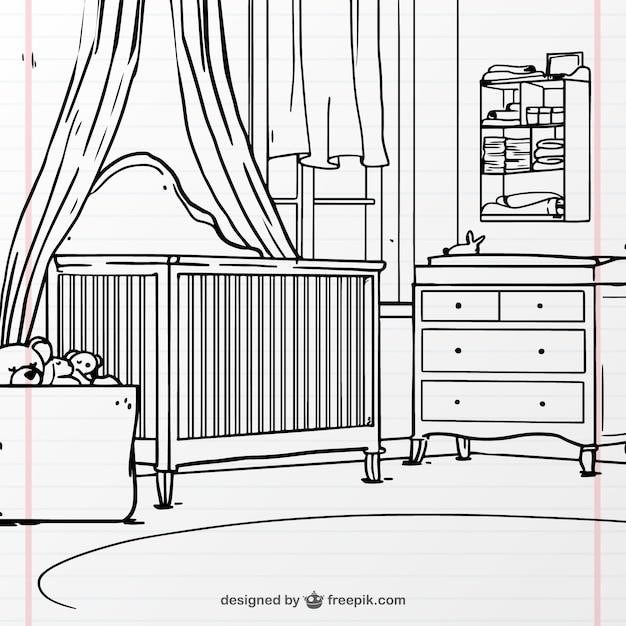
crib plans pdf
Crib Plans PDF⁚ A Comprehensive Guide
This comprehensive guide delves into the world of crib plans PDFs, exploring their benefits, types, and how to find, choose, and utilize them to build a safe and stylish crib for your little one.
Introduction
The arrival of a new baby is a joyous occasion, and creating a safe and comfortable nursery is a top priority for expectant parents. A crib, the cornerstone of a baby’s sleep space, can be a significant investment. However, with the right resources and a little DIY spirit, building a crib from scratch can be a rewarding and cost-effective endeavor. Crib plans PDFs offer a comprehensive guide, leading you through every step of the process, from material selection to assembly.
These digital blueprints provide detailed instructions, cut lists, and visual aids, making the construction process manageable even for novice woodworkers. Whether you desire a traditional, farmhouse, or modern aesthetic, there are crib plans PDFs to match your vision and skill level.
Benefits of DIY Crib Plans
Embarking on a DIY crib project using PDF plans offers a multitude of benefits, making it an appealing choice for many parents. One of the most significant advantages is the potential for significant cost savings. By purchasing materials and building the crib yourself, you can often avoid the hefty price tag of commercially manufactured cribs.
Moreover, DIY crib plans empower you to customize the design to perfectly complement your nursery’s decor. You can choose from a wide range of styles, from classic and traditional to modern and contemporary, ensuring the crib seamlessly blends with your vision. Finally, the satisfaction of creating a unique piece of furniture for your child adds a special touch to their nursery and is a cherished reminder of your dedication and love.
Types of Crib Plans Available
The world of DIY crib plans offers a diverse range of styles to suit every taste and aesthetic. From the timeless charm of farmhouse cribs to the sleek elegance of mid-century designs, there’s a plan for every nursery. Explore the traditional style for a classic and enduring look, or embrace the modern farmhouse trend for a rustic yet refined feel.
If you’re drawn to the minimalist beauty of mid-century design, you’ll find plans that capture that era’s iconic features. These plans often incorporate clean lines, natural materials, and a focus on functionality. No matter your preference, you’re sure to find crib plans that align with your vision and create a beautiful and safe sleeping space for your little one.
3.1. Farmhouse Crib Plans

Farmhouse crib plans embody a timeless charm, blending rustic appeal with modern functionality. These plans often feature simple, sturdy construction, utilizing natural wood tones and classic design elements. Think of sturdy posts, clean lines, and perhaps even a touch of distressing for an authentic farmhouse feel. They exude warmth and comfort, creating a cozy and welcoming atmosphere in any nursery.
Farmhouse crib plans are a popular choice for parents who appreciate the enduring appeal of traditional design. Whether you’re seeking a rustic haven or a touch of country charm, these plans offer a beautiful and practical solution for your baby’s sleeping space.
3.2. Mid-Century Crib Plans
Mid-century crib plans offer a stylish and sophisticated alternative to traditional designs. These plans embrace the clean lines, geometric shapes, and minimalist aesthetics that characterized the mid-20th century design movement. Expect to see sleek, tapered legs, simple, uncluttered forms, and often a use of rich, natural wood finishes.
Mid-century crib plans are ideal for parents who appreciate modern design and a touch of retro chic. They create a sense of airy elegance in the nursery, blending seamlessly with contemporary décor. Whether you’re aiming for a minimalist haven or a touch of retro charm, these plans offer a unique and stylish choice for your baby’s sleeping space.
3.3. Traditional Crib Plans
Traditional crib plans offer a timeless and classic approach to baby furniture design. These plans typically feature a more ornate style, with rounded edges, decorative details, and often a classic white or natural wood finish. Think spindle-style headboards, decorative moldings, and a sense of enduring elegance.
Traditional crib plans are perfect for those who appreciate classic charm and a touch of nostalgia. They create a sense of warmth and comfort in the nursery, blending beautifully with traditional or farmhouse décor. If you’re looking for a crib that will stand the test of time and become a cherished heirloom, traditional plans are an excellent choice.
Finding Free Crib Plans
The internet is a treasure trove of free crib plans, offering a fantastic opportunity to save money and build a unique crib for your little one. Many websites, forums, and blogs dedicated to woodworking and DIY projects offer free downloadable crib plans. Sites like PlansPin.com, DIYstinctly Made, and Shanty Sisters are great starting points. These plans often include detailed instructions, cut lists, and material lists, making it easier for you to bring your crib vision to life.
When searching for free crib plans, remember to check the source’s credibility and ensure the plans are safe and compliant with current safety standards. Look for plans with clear instructions, detailed diagrams, and reviews from other woodworkers. This will help you choose a plan that’s well-designed and suitable for your skill level.
Choosing the Right Crib Plans
Selecting the right crib plans is crucial for a successful project and a safe crib for your baby. Consider your woodworking skills, desired style, and available materials. If you’re a beginner, opt for simpler plans with basic joinery techniques. For more experienced woodworkers, intricate designs with advanced joinery are a great option. Think about the style you envision for your nursery. Do you prefer a traditional, farmhouse, or modern aesthetic?
Also, factor in the materials you have access to or prefer using. Some plans specify particular wood types, while others are adaptable. Finally, research the plans thoroughly to ensure they meet current safety standards and regulations. Look for plans that include features like slat spacing, mattress support, and sturdy construction. Remember, safety should always be a top priority when building a crib.
Essential Tools and Materials
Before embarking on your crib-building journey, gather the necessary tools and materials. A well-equipped workshop is essential for success. Basic tools include a saw (circular or table saw), a drill, a sander, and a measuring tape. Depending on the plans, you may need additional tools like a router, a Kreg jig, or a miter saw. Safety gear, such as eye protection, gloves, and dust masks, is paramount.
Materials vary based on the plans, but common choices include lumber (pine, maple, or oak), plywood, screws, glue, wood stain or paint, and hardware (crib hardware, such as mattress supports and side rails). Check your plans for specific material requirements, quantities, and dimensions. It’s always a good idea to have extra materials on hand in case of mistakes or unexpected needs.
Building Your Crib
With your tools and materials ready, it’s time to bring your crib plans to life! Carefully review the instructions provided in your PDF plans, paying close attention to each step and diagram. Begin by cutting the lumber to the specified dimensions. Use a saw that’s suitable for the type of wood you’re working with. Precise cuts are essential for a sturdy and safe crib.
Assemble the crib frame following the plans’ guidelines. Utilize glue and screws for secure joints. Ensure all pieces are aligned and fitted correctly. Refer to the plans for the proper placement and tightening of hardware. Be sure to sand any rough edges and prepare the crib for finishing. Remember, patience and attention to detail are key throughout the building process.

Safety Considerations
Safety is paramount when building a crib. Always prioritize the well-being of your little one by adhering to strict safety guidelines. Ensure that all materials used meet the required safety standards for crib construction. Check for any cracks, splits, or warping in the wood. Before using any hardware, make sure it’s sturdy and free from defects. Always use screws that are long enough to reach the full depth of the wood.
The crib slats should be spaced no more than 2 3/8 inches apart to prevent your baby from getting trapped. Double-check the distance between slats to ensure they comply with safety regulations. Also, make sure the mattress fits snugly in the crib, with no gaps or spaces that could create a suffocation hazard. Always choose a firm mattress that meets the necessary safety standards for crib use.
Conclusion
Building a crib from plans can be a rewarding and fulfilling experience. With careful planning, attention to detail, and adherence to safety guidelines, you can create a beautiful and functional crib for your baby. The satisfaction of building something unique and personal for your little one is unmatched. Remember to choose crib plans from reputable sources and follow the instructions meticulously. The resources available today offer a wide variety of plans to suit different styles and skill levels.
Take your time, enjoy the process, and don’t be afraid to ask for help if needed. With a little effort and dedication, you can build a crib that will be cherished for years to come.






